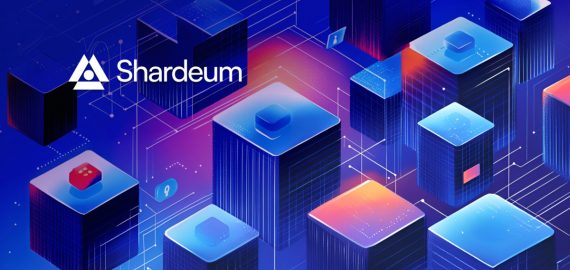The Dynamic Partnership Between AI Agents and GPT for Enhanced Systems and User Interactions
In Brief
Artificial intelligence is transforming how technology interprets data, interacts with users, and accomplishes tasks. Within this realm, AI agents serve unique, defined roles.

The emergence of artificial intelligence has revolutionized how we analyze technology, engage with users, and fulfill various tasks. Generative Pre-trained Transformers (GPT) and AI agents are two pivotal elements that occupy different positions in this expansive field.
What Sets AI Agents Apart From GPT, and What Defines Their Functionality?
AI agents are autonomous entities that execute tasks independently to achieve specific objectives. They possess the ability to perceive their environment, process information, and react without the need for continuous human oversight. This independence makes them crucial in fields like automation, robotics, and complex decision-making systems, allowing them to adapt and thrive in fluid scenarios.
On the other hand, GPT is a specialized form of AI that concentrates on processing language. This advanced language model, pre-trained on extensive datasets, excels at generating contextually appropriate and coherent text. It performs exceptionally well in areas such as content creation, answering queries, and facilitating natural language interactions, relying on user inputs to predict the most fitting sequences of words. In contrast to AI agents, GPT lacks autonomy; it cannot pursue goals beyond generating written responses without user prompts.
The underlying purposes and operation styles of these two technologies exhibit significant disparities. AI agents operate with a goal-oriented mindset, capable of taking action in their environments to fulfill established objectives. They interact with other systems, gather and analyze information, and make decisions driven by machine learning algorithms or predefined rules. In contrast, GPT serves as a reactive tool, only engaging when prompted and focused primarily on understanding and producing text rather than autonomous decision-making.
AI Agents’ Advantages
The advantages of AI agents for organizations are profound, as they can automate workflows, minimize inefficiencies, and elevate decision-making processes. By managing tedious and repetitive tasks, AI agents enable human teams to redirect their attention toward more strategic endeavors that require creativity and critical thinking. For example, an AI agent could manage resource allocation, track workflows, and analyze data instantaneously, alleviating employees from mundane tasks.
Another compelling benefit is the reduction in costs. AI agents enhance efficiency through resource management, streamlining operations, and reducing human error. Their ability to adapt to changing conditions ensures consistent optimized performance. Additionally, by delivering real-time insights derived from vast datasets, these technologies empower decision-makers, enabling leaders to anticipate trends, identify opportunities, and make informed strategic choices.
AI agents also play a crucial role in enhancing customer experiences. Companies utilize these systems to provide swift responses, suggest personalized recommendations, and maintain consistent engagement with clients. This leads to heightened customer interaction, satisfaction, and loyalty, all of which are vital for long-term success.
Understanding the Structure and Functionality of Artificial Intelligence Agents
The architecture of an AI agent forms the foundation of its operational capacity. Depending on the application, this may manifest as a software platform interfacing with digital systems or a tangible entity, like a robot equipped with sensors and actuators. The agent's design dictates how it perceives inputs, navigates and engages with its environment, and executes its functions.
At the heart of an AI agent's operation lies its decision-making function, converting collected data into actionable decisions and behaviors. The technology involved, the nature of the information it handles, and the methods of feedback and learning all inform this design. Developers use an agent program to facilitate this process, which involves training the system, deploying it within its specific environment, and continuously refining its performance based on outcomes.
Typically, AI agents function systematically. They begin by establishing clear objectives and breaking them down into manageable tasks. Next, they interact with other systems or access databases to gather relevant information. Once sufficient data is obtained, the agent executes tasks, monitors its progress, and adjusts its behavior to align with its goals. This iterative approach ensures that the agent remains focused on achieving its designated missions.
The Function and Role of GPT
GPT operates as a sophisticated language model capable of understanding and generating human-like text. Its effectiveness stems from extensive pre-training on vast datasets, which helps it grasp linguistic context, relationships, and patterns. When a user inputs a query, GPT utilizes its knowledge and training to predict and generate appropriate responses.
The strength of GPT lies in its versatility. It can handle inquiries, draft emails, create articles, and assist in various creative projects. However, despite its significant capabilities, GPT is confined to text generation and requires explicit user input to operate. It merely forecasts the most suitable linguistic outcomes for a given context, lacking the ability to engage with its surroundings or make autonomous decisions.
Key Differences Between GPT and AI Agents
The primary distinctions between AI agents and GPT revolve around their autonomy and functionality. AI agents are active systems that autonomously pursue specific goals, interacting with their surroundings and making decisions without constant human intervention. In contrast, GPT serves as a reactive model, generating text based solely on user prompts without the ability to act on its own or engage in decisions unrelated to language processing.
Another significant difference lies in how these technologies interact with their environments. AI agents generally gather real-world data, adapt to changing scenarios, and carry out practical tasks. In contrast, GPT is limited to processing and producing text without any direct interaction with real-world or virtual environments.
While GPT and AI agents cater to different applications, their integration results in powerful tools with enhanced functionalities. For instance, GPT can deliver natural language updates on actions performed by an AI assistant managing a user’s calendar. Similarly, in customer service, while GPT crafts conversational text to inform users, an AI agent handles operational tasks like processing refunds.
This collaboration allows for the creation of systems that merge the linguistic prowess of GPT with the autonomous, goal-directed capabilities of AI agents. Together, they facilitate seamless experiences that feel intelligent and responsive, whether it be in streamlining logistics, automating workflows, or engaging users through personalized conversations.
Disclaimer
In line with the Trust Project guidelines Please keep in mind that the information on this page is meant for informational purposes and is not intended to serve as legal, tax, investment, financial, or any other kind of advice. When investing, only use what you can afford to lose and seek independent financial guidance if uncertain. For more details, we recommend reviewing the terms and conditions alongside the help and support resources offered by the provider or advertiser. MetaversePost is dedicated to delivering accurate, impartial reporting, but market conditions may change without prior notification.







